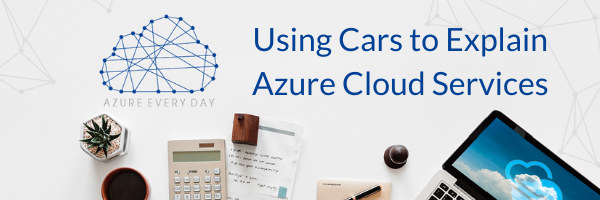
I get it, you may be a bit confused about the main types of Azure cloud services in relation to cloud computing, who is responsible for what and the trade-offs when you shift from one model to the next. I’d like to try to clear some confusion by relating Azure cloud service models to something we all know about – cars.
On- Premise
When you own your car, think of this like an on-premise scenario for your business. In this case, you don’t want to go to the cloud, you just want to stay on-premise. Using my car comparison, you’ve used your money (whether you’ve financed it or not) so it’s equivalent to a capital expenditure.
The value of the car you purchase depreciates over time and you manage service visits, registration fees, insurance, parking fees, fuel, etc. Think about this in terms of you are fully responsible for managing everything in the process between the customer and the provider of the service. Same goes for an on-premise cloud model, you have full responsibility.
Infrastructure as a Service
If you lease a car, it is more like an Infrastructure as a Service (IaaS) in Azure. You’re still responsible for things like insurance, parking and fuel but you no longer own a car. The car service, financing and depreciation are built into monthly payments to the leasing company, taking that responsibility out of your hands. With Azure IaaS model, you avoid the expense and complexity of buying and managing your own physical servers and other data center infrastructure.
Platform as a Service
The Azure Platform as a Service (PaaS) model compares to renting a car. You’re responsible for much less and everything is built into your payment. You’re still providing fuel, road tolls and yourself as the driver but any service, spare parts, etc. is provided by the company. With this Azure cloud service you manage the applications and services you develop, and the cloud service provider typically manages everything else.
Software as a Service
The last cloud service model is Software as a Service (SaaS) and this compares to car services such as Uber or Lyft. You’re paying for a ride from point A to point B; you’re not responsible for the car, fuel, insurance or even the driver. The SaaS model takes all the responsibility off you; it improves accessibility, scalability, and reliability while minimizing overhead and maintenance costs.
I hope my Azure services/car comparison gave you a little clarity. It’s important to note that all Azure cloud services can be used in the combination that fits your needs. So, back to my car comparison, you own a car for long rides but take Uber for shorter trips.
If you'd like to learn more about Azure offerings and how to take advantage of any cloud services for your organization, we’d love to help. Our cloud experts can help you find and implement the right combination of services for your needs. Let us help you take your business from good to great – click below to learn more.


-1.png)
Leave a comment